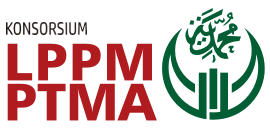Psychological and Environmental Support: An Important Complement to Controlled Antiretroviral Therapy for HIV Patients
DOI:
https://doi.org/10.53017/ujhs.13Keywords:
Quality of life, WHOQOL-HIV bref, Psychological intervention, Environmental supportAbstract
This article presents a quality of life profile for HIV patients who have undergone controlled antiretroviral therapy. Specifically, researchers reviewed the unique needs of research subjects for psychological and environmental support. The research took place at the Regional General Hospital KRT Setjonegoro Wonosobo, involving 68 research subjects. All study subjects were HIV patients undergoing controlled antiretroviral therapy (outpatient) with a duration of more than six months and were aged more than 15 years. Investigation of the quality of life profile used the Indonesian version of the WHOQOL-HIV Bref questionnaire. The results showed that HIV patients who underwent controlled therapy had a higher quality of life score than general HIV patients. Antiretroviral treatment has helped them have physical qualities, independence, spiritual side, and social abilities in living life. Even so, they need psychological intervention and environmental support to have consistent quality of themselves. Health workers involved in managing HIV patients need to provide professional interventions to improve their ability to concentrate and ensure that they are always comfortable with their physical condition. Further, there is a need for cooperation by relationships (family, friends, community) and health workers to ensure that HIV patients do not experience financial difficulties, enjoy time in a relaxed manner, and feel safe as part of the environment society in general.
Downloads
References
Direktorat Jenderal Pencegahan dan Pengendalian Penyakit, “Laporan Perkembangan HIV AIDS dan PIMS Triwulan III Tahun_2020,” Kementerian Kesehatan Republik Indonesia, Nota Dinas PM.02.02/III/11205/2020, Nov 2020. [Daring]. Tersedia pada: https://siha.kemkes.go.id/portal/files_upload/Laporan_Perkembangan_HIV_AIDS_dan_PIMS_Triwulan_III_Tahun_2020.pdf.
World Health Organization, “Indonesia HIV Country Profile 2019.” https://cfs.hivci.org/country-factsheet.html (diakses Mar 10, 2021).
World Health Organization, “HIV/AIDS,” Key Facts, Nov 30, 2020. https://www.who.int/news-room/fact-sheets/detail/hiv-aids (diakses Mar 10, 2021).
A. Suswani, A. A. Arsin, R. Amiruddin, M. Syafar, dan S. Palutturi, “Factors related quality of life among people living with HIV and AIDS in Bulukumba,” Int. J. Community Med. Public Health, vol. 5, no. 8, hlm. 5, 2018.
M. Liping, X. Peng, L. Haijiang, J. Lahong, dan L. Fan, “Quality of Life of People Living with HIV/AIDS: A Cross-Sectional Study in Zhejiang Province, China,” PLOS ONE, vol. 10, no. 8, hlm. 14, 2015.
E. Karkashadze, M. A. Gates, N. Chkhartishvili, J. DeHovitz, dan T. Tsertsvadze, “Assessment of quality of life in people living with HIV in Georgia,” Int. J. STD AIDS, vol. 28, no. 7, hlm. 7, 2017.
Y. S. Handajani, Z. Djoerban, dan H. Irawan, “Quality of Life People Living with HIV/AIDS: Outpatient in Kramat 128 Hospital Jakarta,” Acta Med Indones, vol. 44, no. 4, hlm. 7, 2012.
C. Zubaran dkk., “Quality of life and adherence to antiretroviral therapy in Southern Brazil,” AIDS Care, vol. 26, no. 5, hlm. 619–625, Mei 2014, doi: 10.1080/09540121.2013.841838.
H. Lutfiyati, S. B. Santoso, P. Pribadi, dan S. Ratnafuri, “The use of antiretroviral therapy (ARV) in HIV/AIDS patients,” Technol. Rep. Kansai Univ., vol. 62, no. 03, hlm. 6, 2020.
S. B. Santoso, D. A. Perwitasari, I. N. Faridah, dan A. A. Kaptein, “Hubungan Kualitas Hidup Dan Persepsi Pasien Tentang Penyakit Diabetes Mellitus Tipe 2 Dengan Komplikasi,” Pharmaciana, vol. 7, no. 1, hlm. 33, 2017, doi: 10.12928/pharmaciana.v7i1.4699.
J. Gaspar, R. K. Reis, F. M. V. Pereira, L. A. de S. Neves, C. de C. Castrighini, dan E. Gir, “Quality of Life in Women with Hiv/Aids in a Municipality in the State of são Paulo,” Rev. Esc. Enferm. USP, vol. 45, no. 1, hlm. 230–236, Mar 2011, doi: 10.1590/S0080-62342011000100032.
B. X. Tran, “Quality of Life Outcomes of Antiretroviral Treatment for HIV/AIDS Patients in Vietnam,” PLoS ONE, vol. 7, no. 7, hlm. 8, 2012.
O. Oguntibeju, “Quality of life of people living with HIV and AIDS and antiretroviral therapy,” HIVAIDS - Res. Palliat. Care, vol. 2012, no. 4, hlm. 117, Agu 2012, doi: 10.2147/HIV.S32321.
M. Salehi, S. Niroumand, M. Erfanian, R. Sajjadi, dan M. Dadgarmoghaddam, “Validation of Persian version of WHOQOL-HIV BREF questionnaire in Islamic Republic of Iran,” East. Mediterr. Health J., vol. 22, no. 9, hlm. 647–653, Sep 2016, doi: 10.26719/2016.22.9.647.
S. B. Santoso, H. Lutfiyati, R. I. Prasidha, S. Ratnafuri, dan K. A. Azzahra, “What do patients with HIV-infection perceive and know regarding to antiretrovirals? An exploration among participants undergoing controlled-therapy,” Technol. Rep. Kansai Univ., vol. 62, no. 04, hlm. 7, 2020.
N. N. Muhammad, H. Shatri, Z. Djoerban, dan M. Abdullah, “Uji Kesahihan dan Keandalan Kuesioner World Health Organization Quality of Life-HIV Bref dalam Bahasa Indonesia untuk Mengukur Kualitas Hidup Pasien HIV/AIDS,” J. Penyakit Dalam Indones., vol. 4, no. 3, hlm. 112, Sep 2017, doi: 10.7454/jpdi.v4i3.137.
World Health Organization, “WHOQOL-HIV Instrument Users Manual: Scoring and Coding for the WHOQOL-HIV Instruments.” Department of Mental Health and Substance Dependence World Health Organization, 2002, [Daring]. Tersedia pada: https://www.who.int/mental_health/media/en/613.pdf.
S. Handayani, N. Y. Ratnasari, P. H. Husna, Marni, dan T. Susanto, “Quality of Life People Living with HIV/AIDS and Its Characteristic from a VCT Centre in Indonesia,” Ethiop. J. Health Sci., vol. 29, no. 6, 2019, doi: 10.4314/ejhs.v29i6.13.
B. X. Tran dkk., “Gender differences in quality of life outcomes of HIV/AIDS treatment in the latent feminization of HIV epidemics in Vietnam,” AIDS Care, vol. 24, no. 10, hlm. 1187–1196, Okt 2012, doi: 10.1080/09540121.2012.658752.
N. Meemon, S. C. Paek, D. Yenchai, dan T. T. H. Wan, “Application of the WHOQOL-HIV-BREF Questionnaire in HIV-Infected Thai Patients: Reliability and Validity of the Instrument,” J. Assoc. Nurses AIDS Care, vol. 27, no. 5, hlm. 698–708, Sep 2016, doi: 10.1016/j.jana.2016.04.007.
J. H. Cronje, M. Williams, L. Steenkamp, D. Venter, dan D. Elkonin, “The quality of life of HIV-infected South African university students: Experiences with the WHOQOL-HIV-Bref,” AIDS Care, vol. 29, no. 5, hlm. 632–635, Mei 2017, doi: 10.1080/09540121.2016.1234688.
J. da Silva, K. Bunn, R. F. Bertoni, O. A. Neves, dan J. Traebert, “Quality of life of people living with HIV,” AIDS Care, vol. 25, no. 1, hlm. 71–76, Jan 2013, doi: 10.1080/09540121.2012.686594.
E. Frederika, I. Normalina, N. Nasronudin, dan R. Mega, “Evaluation on the Effect of Antiretroviral Drugs on CD4 T-Cell and the Increment of Body Weight Among HIV-AIDS Patients in Surabaya,” Indones. J. Trop. Infect. Dis., vol. 3, no. 2, hlm. 92–95, 2012, doi: 10.20473/ijtid.v3i2.210.
J. E. Machado-Alba dan X. Vidal, “Effectiveness of Antiretroviral Treatment in Colombia,” Rev. Panam. Salud Pública, vol. 32, no. 5, hlm. 360–367, Nov 2012, doi: 10.1590/S1020-49892012001100006.
A. Trickey dkk., “Survival of HIV-Positive Patients Starting Antiretroviral Therapy Between 1996 and 2013: A Collaborative Analysis of Cohort Studies,” Lancet HIV, vol. 4, no. 8, hlm. e349–e356, Agu 2017, doi: 10.1016/S2352-3018(17)30066-8.
J. D. Kowalska dkk., “Long-Term Exposure to Combination Antiretroviral Therapy and Risk of Death from Specific Causes: No Evidence for Any Previously Unidentified Increased Risk Due to Antiretroviral Therapy,” AIDS, vol. 26, no. 3, hlm. 315–323, Jan 2012, doi: 10.1097/QAD.0b013e32834e8805.
V. Baranov, D. Bennett, dan H.-P. Kohler, “The Indirect Impact of Antiretroviral Therapy: Mortality Risk, Mental Health, and HIV-Negative Labor Supply,” J. Health Econ., vol. 44, hlm. 195–211, Des 2015, doi: 10.1016/j.jhealeco.2015.07.008.
S. Q. Khairunisa, I. Normalina, dan N. Nasronudin, “Evaluation on the Number of CD4 T Cells and Antiretroviral Side Effects in Patients with AIDS,” Indones. J. Trop. Infect. Dis., vol. 3, no. 2, hlm. 96–99, 2012, doi: 10.20473/ijtid.v3i2.213.
C. Dagli-Hernandez, R. C. Lucchetta, T. R. de Nadai, J. C. Fernandez Galduróz, dan P. de Carvalho Mastroianni, “Self-Perception of Knowledge and Adherence Reflecting the Effectiveness of Antiretroviral Therapy,” Patient Prefer. Adherence, vol. Volume 10, hlm. 1787–1793, Sep 2016, doi: 10.2147/PPA.S112108.
D. Boateng, G. D. Kwapong, dan P. Agyei-Baffour, “Knowledge, Perception About Antiretroviral Therapy (ART) and Prevention of Mother-to-Child-Transmission (PMTCT) and Adherence to Art Among HIV Positive Women in the Ashanti Region, Ghana: A Cross-Sectional Study,” BMC Womens Health, vol. 13, no. 1, hlm. 1–8, Des 2013, doi: 10.1186/1472-6874-13-2.
S. A. Olowookere, A. A. Fatiregun, dan I. F. Adewole, “Knowledge and Attitudes Regarding HIV/AIDS and Antiretroviral Therapy Among Patients at a Nigerian Treatment Clinic,” J. Infect. Dev. Ctries., vol. 6, no. 11, hlm. 809–816, Nov 2012, doi: 10.3855/jidc.2086.
M. D. Skinta, B. D. Brandrett, W. C. Schenk, G. Wells, dan J. W. Dilley, “Shame, Self-Acceptance and Disclosure in the Lives of Gay Men Living with HIV: An Interpretative Phenomenological Analysis Approach,” Psychol. Health, vol. 29, no. 5, hlm. 583–597, Mei 2014, doi: 10.1080/08870446.2013.871283.
M. Zhao, “Factors associated with hostility among people living with HIV/AIDS in Northeast China: a cross-sectional study,” BMC Public Health, vol. 19, no. 1189, hlm. 10, 2019.
P. Ü. Calvetti, G. R. M. Giovelli, G. J. C. Gauer, dan J. F. D. de Moraes, “Psychosocial factors associated with adherence to treatment and quality of life in people living with HIV/AIDS in Brazil,” J. Bras. Psiquiatr., vol. 63, no. 1, hlm. 8–15, Mar 2014, doi: 10.1590/0047-2085000000002.
N. Nobre, M. Pereira, R. P. Roine, H. Sintonen, dan J. Sutinen, “Factors associated with the quality of life of people living with HIV in Finland,” AIDS Care, vol. 29, no. 8, hlm. 1074–1078, Agu 2017, doi: 10.1080/09540121.2017.1281879.
X. Wu, J. Chen, H. Huang, Z. Liu, X. Li, dan H. Wang, “Perceived stigma, medical social support and quality of life among people living with HIV/AIDS in Hunan, China,” Appl. Nurs. Res., vol. 28, no. 2, hlm. 169–174, Mei 2015, doi: 10.1016/j.apnr.2014.09.011.
G. J. Culbert, “Violence and the Perceived Risks of Taking Antiretroviral Therapy in US Jails and Prisons,” Int. J. Prison. Health, vol. 10, no. 2, hlm. 94–110, Jun 2014, doi: 10.1108/IJPH-05-2013-0020.
K. Curran dkk., “‘If I Am Given Antiretrovirals I Will Think I Am Nearing the Grave’: Kenyan HIV Serodiscordant Couples’ Attitudes Regarding Early Initiation of Antiretroviral Therapy,” AIDS, vol. 28, no. 2, hlm. 227–233, Jan 2014, doi: 10.1097/QAD.0000000000000025.
R. K. Reis, C. B. Santos, dan E. Gir, “Quality of life among Brazilian women living with HIV/AIDS,” AIDS Care, vol. 24, no. 5, hlm. 10, 2012.
F. B. M. Oliveira dan M. E. B. Moura, “Quality of life and associated factors in people living with HIV/AIDS,” Acta Paul. Enferm., vol. 28, no. 6, hlm. 7, 2015.
N. Mafirakureva, B. Dzingirai, M. J. Postma, M. van Hulst, dan S. Khoza, “Health-related quality of life in HIV/AIDS patients on antiretroviral therapy at a tertiary care facility in Zimbabwe,” AIDS Care, vol. 28, no. 7, hlm. 904–912, Jul 2016, doi: 10.1080/09540121.2016.1173639.
Downloads
Published
How to Cite
Issue
Section
License
Copyright (c) 2021 Setiyo Budi Santoso, Heni Lutfiyati, Ulfahishofi Hanifah Afifi, Shellyta Ratnafuri

This work is licensed under a Creative Commons Attribution-NonCommercial 4.0 International License.





